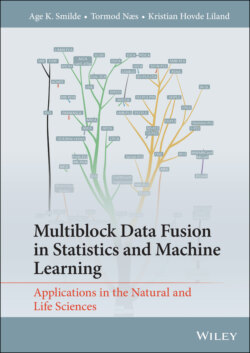Читать книгу Multiblock Data Fusion in Statistics and Machine Learning - Tormod Næs - Страница 17
1.3 Types of Data and Analyses 1.3.1 Supervised and Unsupervised Analyses
ОглавлениеIn any multiblock data analysis, we first have to choose between the main paradigms unsupervised and supervised analysis. Unsupervised analysis refers to explorative analysis looking for structure and connections in the data either in a single data block or across data blocks, typically using dimension reduction including maximisation/minimisation of some criterion combined with orthogonalisation, or by clustering techniques. It is crucial that the roles of the blocks are exchangeable: we can change the order of the blocks without changing the solution.
Supervised analysis refers to predictive data analysis, where emphasis is on a single block of data, Y, (dependent block/response) which is connected to one or more blocks of data, Xm, (independent block(s)/predictors) through regression or classification. The role of the blocks is now important: some blocks are regarded as dependent and some are regarded as independent.
There are also more complex structures where the multiblock problem is a mixture of these two (see, e.g., the L-shape problem in Figure 1.7).
Figure 1.7 L-shape data of consumer liking studies.
